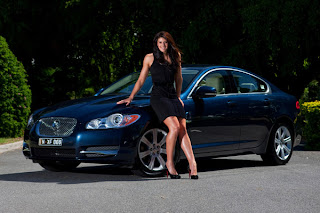It was in 1922 when Jaguar founder William Lyons (later Sir William Lyons) set up his first business - the Swallow Sidecar Company, which was based in Blackpool and built motorcycle sidecars. In 1926 this business expanded into the Swallow Sidecar and Coach Building Company, which apart from the sidecars now also built coachwork for other car manufacturers. 1928 saw another change of name this time to the Swallow Coach Building Company, and production was moved to an ex artillery factory in Foleshill, Coventry. In 1931 William Lyons produced his own cars which were known as the SS1 and SSII, but in 1935 the first cars to be known as Jaguar were launched under the SS name.
These cars were the 1½ litre SS Jaguar Saloon and the 2½ litre SS Jaguar Saloon. Also in 1935 two very desirable sports cars were produced - the SS90 and SS100. A 3½ litre SS Jaguar Saloon arrived in 1937. All car production ceased during the Second World War and the factory was turned over to aircraft and munitions work. In 1945 William Lyons wisely changed the company name from SS to Jaguar Cars, and production of the pre war models recommenced. At the 1948 Earls Court Motor Show, Jaguar introduced its fastest car to date, the 3.4 litre XK 120 sports car.
It had a top speed of 120 mph and was powered by an all-new twin overhead camshaft engine - an engine that was so good and ahead of its time, that this XK engine went on to power all subsequent Jaguar cars in one capacity or another for nearly forty years. In 1952 Jaguar moved to a new factory in Browns Lane Coventry, and 1954 saw the arrival of the even more powerful XK 140. It was during the 1950's that Jaguar had many great victories in motor sport as well as enjoying great success in building fast and luxurious saloon cars. In 1959 the famous Mk II saloon was introduced and quickly become the firm favourite of many. In 1960 Jaguar took over Daimler and in 1961, what is probably the most famous car in the world, the E type
Jaguar was launched. In 1966 Jaguar merged with the British Motor Corporation and in 1968 a further merger with Leyland took place (although Jaguar was to regain its independence in the 1980's). Some say that things went a bit down downhill at that point but it was in 1968 that the world beating XJ6 was launched! Sir William Lyons retired as Managing Director and Chairman of Jaguar in 1972 and became the Honorary President until he died in 1985. Today the Ford Motor Company owns Jaguar.
Jaguar Mk IX
Now often fondly remembered as the last of the "Battleship" Jaguars, the powerful and luxurious Mark IX saloon was launched in October 1958 to replace the Mark VIII, although in the end this did not actually finish its production run until October 1959, thereby overlapping the Mark IX by a full year. Outwardly similar (apart from very minor trim changes) to the Mark VIII, the Mark IX was to become the last Jaguar saloon to use a separate chassis.
Mechanical differences over the already powerful Mark VIII included replacing the 3.4 litre version of the twin overhead camshaft XK engine with a 3.8 litre version which produced 220bhp. Power steering was fitted as standard to the Mark IX as were four wheel disc brakes with servo assistance. Like the Jaguar Mk V, VII, & VIII saloons (there was no Mark VI) that came before it, the interior of the Mark IX was exceptionally well appointed. High quality leather seating, comprehensive instrumentation, walnut fascia panels, door cappings, and picnic tables which folded down from the rear seats were all standard equipment. The Mark IX ended production in September 1961 when it was replaced with the all new, very sleek looking Mark X in October of the same year.
| Jaguar E-Type |















No comments:
Post a Comment